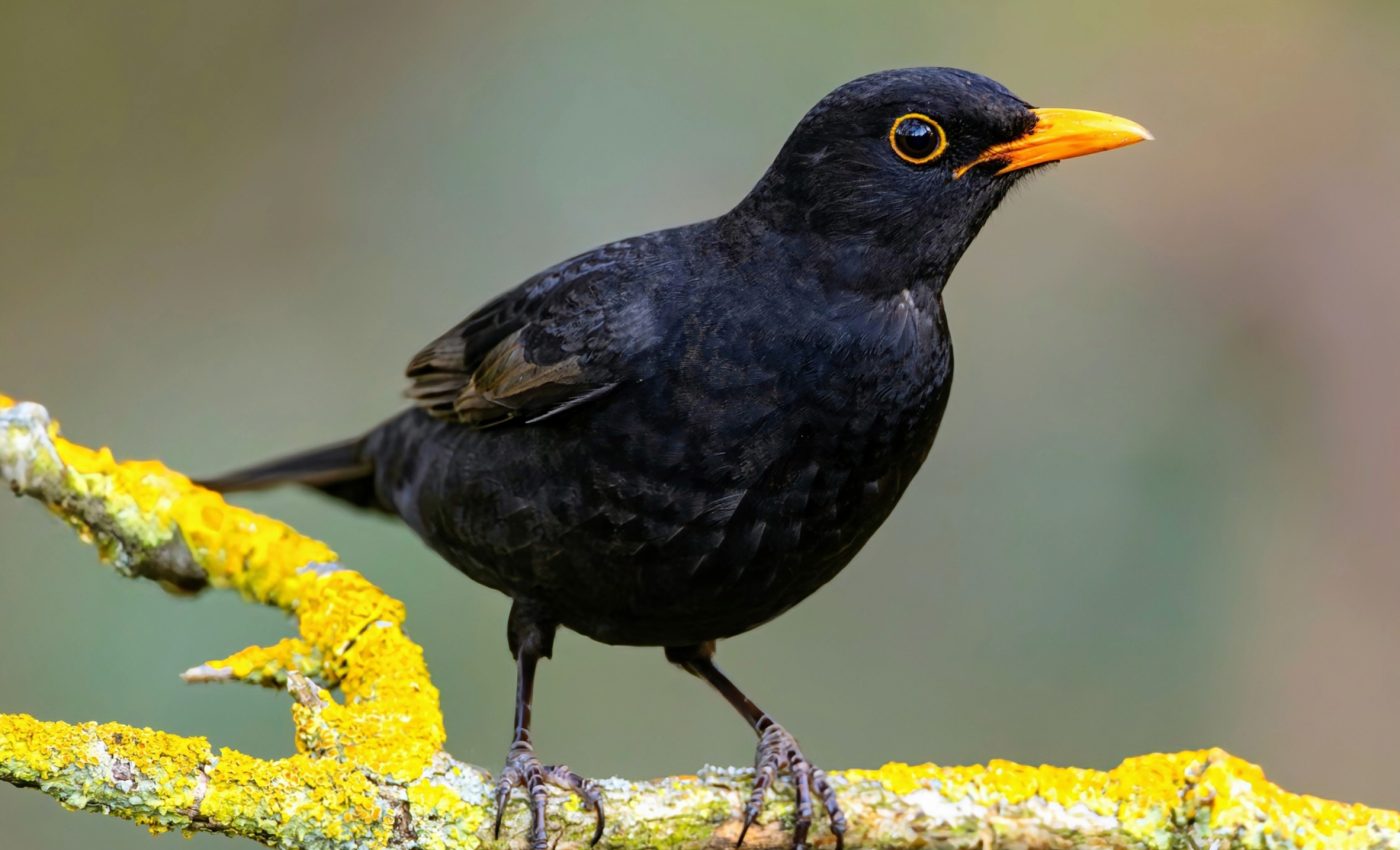
Blackbirds reveal the true energy costs of migrating
Every year, millions of birds migrate in search of warmer climates to escape the harsh winter. However, this seasonal journey does not necessarily help birds conserve energy as previously thought, according to a recent study from the Max Planck Institute of Animal Behavior (MPI-AB).
By implanting miniaturized loggers into wild blackbirds, scientists were able to record detailed measurements of the birds’ heart rates and body temperatures every 30 minutes, from fall until the following spring.
No overall energy advantage
The study offers an unprecedented look into the true energetic costs of both migrating and staying in place. The data also uncovered an unexpected energy-saving mechanism used by blackbirds before migration begins.
“We never expected to discover that birds gain no overall energy advantage by escaping cold winters,” said Nils Linek, a first author of the study and researcher at MPI-AB.
“It was a longstanding textbook assumption that animals spend less energy by migrating to warmer places, but our findings have shown that these savings don’t add up. Rather, the energetics of migration is far more complex and interesting than theory predicted.”
Measuring energy expenditure of blackbirds
Migration is a spectacular example of how animals adapt to changing seasons, but the fundamental question of why animals migrate has long puzzled scientists.
Part of the challenge has been the difficulty of studying the physiology of free-living animals over extended periods.
In this study, researchers from MPI-AB and Yale University made a significant breakthrough by using sensors that measured the energy expenditure of blackbirds over the course of a full year, including their migration.
They then paired this physiological data with energy modeling to calculate the predicted energetic costs of regulating body temperature.
Blackbirds save up energy for their journey
The data showed that migrating blackbirds conserved substantial amounts of energy in preparation for migration by lowering their metabolism three weeks before departing. This adjustment may offset the energy costs of the migratory flights.
“They are essentially turning down their internal thermostat, allowing them to save energy for the journey ahead,” explained Linek.
Predicted energy surplus
Yet, once the birds reached their warmer wintering areas, they did not seem to reduce their overall daily energy expenditure as expected.
“This was not what we anticipated,” said co-first author Scott Yanco, a scientist at the Yale Center for Biodiversity and Global Change.
“The energy modeling we did in the study predicted that migration should definitely create an energy surplus because of the substantially reduced cost of keeping warm in milder climates.”
Hidden costs in overwintering sites
The mystery remains: where did this predicted energy surplus go? “We can only speculate at this point, but we suggest that there may be other physiological adaptations or hidden costs that migrant blackbirds face in their milder overwintering sites,” said Linek.
“These might include factors such as the need to maintain vigilance in new environments, immune functions, or unknown stressors that offset the thermal advantage they should have experienced.”
“Partially migratory” blackbirds
The researchers conducted their study in southern Germany, where blackbird populations are “partially migratory.” This means that while some blackbirds migrate south to regions like Spain and France, others remain in Germany throughout the year.
To track both migrant and resident birds, the researchers implanted heart rate and body temperature loggers into 120 wild blackbirds. These devices recorded data continuously from September until May.
Additionally, the team used radio transmitters to monitor the departure and return of the migratory birds. Over one million data points were analyzed to compare the physiological differences between the two groups.
Tracking blackbirds in remarkable detail
“Using physiological data, we were able to see in remarkable detail how birds undertake and experience migration,” said co-author Tamara Volkmer, a doctoral student at MPI-AB.
“We could observe everything from the migratory flight itself to how they recovered afterward and what they did over the winter. By recording long-term, detailed energy measurements, we could glimpse the hidden costs of their impressive round trip.”
Evolutionary drivers of migration
The findings suggest that migration, despite its risks and challenges, does not result in energy savings in warmer climates. This raises new questions about the evolutionary drivers of migration.
“This could have implications for our understanding of migration and its underlying mechanisms across different bird species,” Linek explained.
Broader implications of the study
The study also has broader implications for predicting how species will respond to future climate changes.
Study senior author Jesko Partecke is a group leader at MPI-AB who has been studying blackbird migration for two decades.
“Understanding the physiological underpinnings of migration means that we can better forecast which species may adapt, which may alter their migratory patterns, and which may face greater risks as the world continues to warm,” said Partecke.
As climate change progresses, this research could prove essential in understanding how migratory species will cope with shifting environmental conditions, potentially altering migration strategies or even leading to the disappearance of certain migratory behaviors.
The study is published in the journal Nature Ecology & Evolution,
—–
Like what you read? Subscribe to our newsletter for engaging articles, exclusive content, and the latest updates.
Check us out on EarthSnap, a free app brought to you by Eric Ralls and Earth.com.
—–













